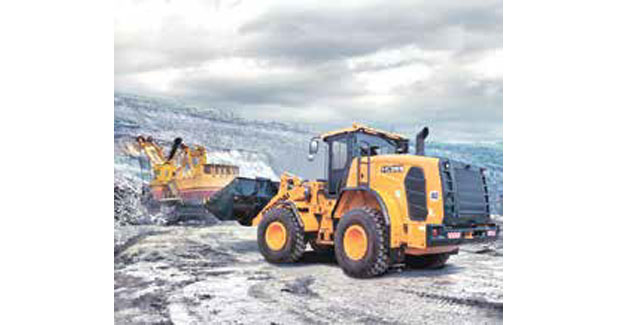
Hyundai Wheel Loader
Hyundai Heavy Industries has launched the HL955 wheeled loader. Powered by a Stage IV, 149 kW (200 HP) Cummins engine, this is up to 10 per cent more fuel-efficient in truck-loading and can achieve up to 5 per cent more productivity compared to its 9A series predecessor.
The cabins on the new HL machines have been designed with the operators? safety and comfort in mind. As well as more space in the cabin - there?s a bigger and more comfortable seat with an adjustable arm rest. The new air conditioning system maximises heating and cooling performance by optimising air flow through the cabin. The electro-hydraulic integrated control lever allows operators to operate attachments with ease which in turn enables greater productivity and minimises operator fatigue. The ECO Gauge allows economic operation of the machine. The gauge level changes colour with the engine torque and fuel efficiency level. In addition, it monitors fuel consumption such as average rate and the total amount of fuel consumed which are both displayed on the monitor.
The HL Series improves work precision with additional weight calibration. The automatic/manual cumulative weighing function greatly improves operating efficiency. Icons displaying weighing errors and the two-colour weight value indicator on the monitor enable accurate weighing to support efficient production management. Hyundai engineers have also redesigned the wheel loader buckets on the HL series and they now have a better fill factor, an additional spill guard to minimise spillage of loaded materials and changeable heel plates.
The fully retractable engine hood allows easy cleaning and maintenance. The initial replacement cycle of oil and filter is extended to 250 hours to further reduce the maintenance costs.
The HL Series has a large-volume air cleaner, an automatic dust ejector and a three-stage turbo pre-cleaner, as an option, to improve the replacement cycle and durability of supplies. The machine also has a fully sealed engine room, designed to prevent the possibility of fire caused by the inflow of ?foreign materials?.


 +91-22-24193000
+91-22-24193000 Subscriber@ASAPPinfoGlobal.com
Subscriber@ASAPPinfoGlobal.com